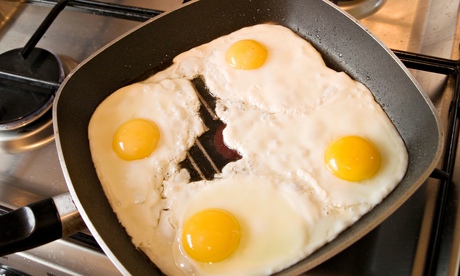
As if eating healthily were not hard enough already, we now have to consider, once again, the pans we cook in. Last week, the United States Environmental Protection Agency (EPA) issued stricter limitations on the use of long-chain perfluorinated chemicals (PFCs), traditionally employed in the manufacture of non-stick pans.
Perfluorooctanoic acid (PFOA), linked in laboratory animals to an increase in tumours of the liver, pancreas and testicles and reduced fertility, is one of the chemicals used in the chain of reactions that makes the common non-stick surface Teflon. The EPA says long-chain PFCs accumulate in people and wildlife and, while there is less clear evidence of harm to humans, it does not want to take chances. The agency has already told companies to phase out these chemicals by the end of 2015. Now, this latest move will restrict their use in new products in the US. So is it safe to cook with non-stick pans?
The solution
Cookware has often been suspected of causing health problems. In the 1970s, aluminium was (wrongly) linked with Alzheimer’s disease, causing researchers to consider aluminium pans a risk factor. The US Alzheimer’s Association now has aluminium on its myth list – pointing out that there is not enough evidence to show that an association exists.
Copper pots cook food evenly, but unlined pans can cause copper to leach into food and cause diarrhoea and sickness. Iron cookware, such as skillets, can actually have minor health benefits as they increase the amount of iron in cooked food (though that’s not so good if you have a condition where you have too much iron already). Stainless steel is both reasonably priced and has no history of health scares.
However, Teflon, despite its link to long-chain PFCs, is thought to be safe, because part of the manufacturing process involves heating the coating to high temperatures, which gets rid of PFOA before the pan reaches the assembly line. A study published in the journal Food Additives and Contaminents tested 26 non-stick cookware products under extreme conditions and concluded that none of them released any noxious chemicals.
What has been reported from Teflon use is a risk of fumes from overheating pans, giving people temporary flu-like symptoms and sickness – known as polymer-fume fever. These fumes do not contain any PFOA and are mostly noxious to pet birds, so if you have a budgie or parrot, then ventilate your kitchen and don’t overheat your non-stick pans.
Cook on medium or low heat. If you have flaking pans, you could swallow a chip of Teflon, and while it might be medically OK, why would you want to? Throw them away. The rest are fine to keep.

